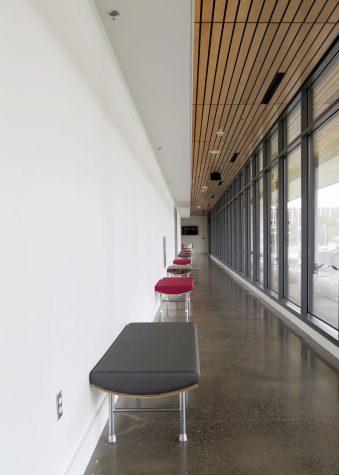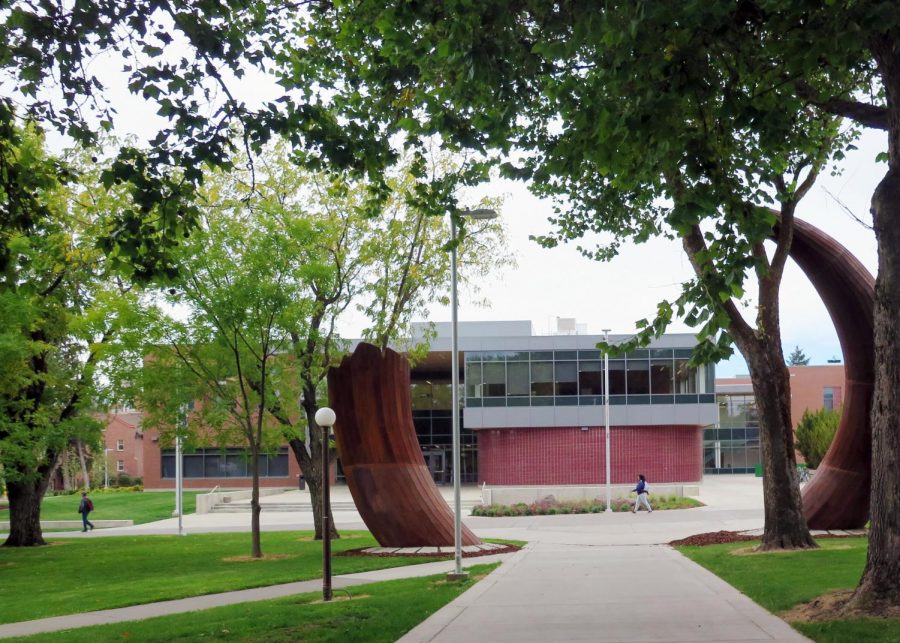Samuelson opens in time for the start of classes
Samuelson is still undergoing some construction, but Project Manager Doug Ryder said that it is 95 percent complete, and should be finished in a month or two.
September 28, 2018
After a decade of planning and two years of construction, the new Samuelson STEM building is finally open. Many students have walked past Samuelson in the last couple of years due to its location between Black and Mitchell Hall, and just south of the Science II building. With the opening of the building, much of the southern half of the campus has opened back up to foot traffic that may want to check out the new building and what it has to offer the university.
Doug Ryder, who, for the last six months, has been the project manager for Samuelson as well as the academic facilities planning officer, is excited to see the building help CWU students.
“I like the idea that it is a student-centered building, and it’s designed around engaged learning,” Ryder said. “There is a lot of flexibility in the classrooms and it has really sophisticated instructional technology.”
The technology in Samuelson makes it appealing to students looking for a place to study. According to Ryder, Samuelson is designed with high density Wi-Fi and high-density seating areas, such as breakout rooms. These rooms consist of a table, a wall-mounted computer monitor and sliding glass doors that eliminate outside distraction.
Samuelson is going to be used by many departments, such as math and sociology. It will also be home to Information Technology and Administrative Management (ITAM) and the Multimodal Learning department.
“One of the things we are most excited about is our active learning classrooms that change format from lecture to more group work,” said Delayna Breckon, Senior Instructional Technologist for Multimodal Learning.
Multimodal Learning has moved to Samuelson from Black Hall, and according to Multimodal Learning Executive Director Dr. Christopher Schedler, this is space in the new building that they didn’t have in Black.
“Basically they’re [Samuelson’s active learning classrooms] meant for active, collaborative, teamwork-based learning and they have the technology with monitors on every wall, so students working in groups can share digital content to individual monitors or share with the whole class,” Schedler said. “The instructor is actually in the center of the room, rather than at the front, so it’s different than the kind of lecture model. It’s meant to be more collaborative, interactive, active learning.”

The northern wing of Samuelson contains the framework of the 1969 building, and got a complete renovation of systems.
Schedler appreciates that the Samuelson is “future-proofed” and has space for wiring and features that improve the ease of use of the new technologies that are in the building. This will help in the goal of the building, in that it will use technology in order to improve student learning.
One of the more advanced rooms in the building is the create lab. This lab is open to students and faculty to work on projects requiring advanced technology such as 3D printers, virtual reality and laser cutting. This is also helped out by the one-button record centers located near the create lab that students can use to record audio for projects such as podcasts.
Samuelson is not an entirely new building. There was an old Samuelson building that served as the student union building before that department was moved to the SURC. Originally built in 1926, the Samuelson Union Building, or SUB, underwent many renovations, the most recent of which was in 1969. While construction on Samuelson required that the larger southern wing of the building be torn down, the university was able to keep the superstructure of the northern wing largely intact.
“We kept the overall bones of the 1969 building,” Ryder said, “and did a complete renovation of all the systems.”
Ryder said that the major construction on Samuelson was completed slightly ahead of schedule and attributes this to Lydig Construction, a contracting company that CWU has used in the renovations of Black Hall in the 1990s and is currently using in the construction of Dugmore Hall, the new residence hall north of Brooks Library.


